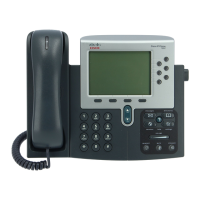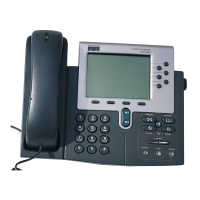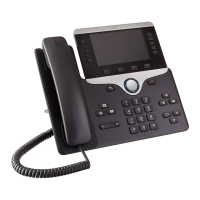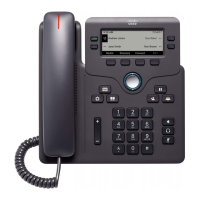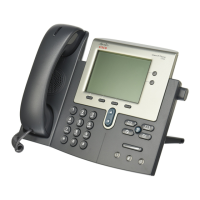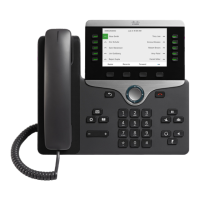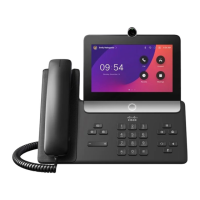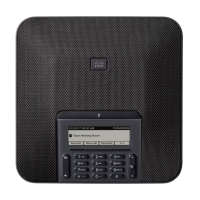Do not blow or use compressed air (for example, aerosol cans, low- or high-pressure air nozzles) to clean the
openings of the handset.
Do not use a vacuum cleaner or other suction device to clean the openings of the handset.
Do not use pins or other objects to clean the openings of the handset.
Use of air, suction, or mechanical objects to clean the openings can damage the handset and voids the handset
warranty.
Caution
If you happen to drop the handset into water, or it gets splashed, follow our instructions to dry off the handset.
See If You Drop Your Handset in Water, on page 17.
Clean the Handset Screen
Procedure
If your handset screen gets dirty, wipe it with a soft, dry cloth.
Do not use any liquids or powders on the phone because they can contaminate the handset components
and cause failures.
Caution
Clean the Handset Exterior
You can clean the handset exterior using a dry, lint-free cloth. For the health-care environment, we recommend
that you use Caviwipes
™
and Saniwipes
™
to thoroughly clean the handset. Caviwipes and Saniwipes contain
up to 17% isopropanol.
Excessive use of Caviwipes and Saniwipes more than 3 times a day will damage the handset surface coating
and will change the appearance of handset.
Caution
Any cleaning solution containing a higher amount of isopropanol, including pure isopropanol, or an alternative
alcohol-based liquid could potentially damage the handset. Do not clean the handset with bleach or other
caustic products.
Clean your handset immediately if it comes in contact with anything that may cause stains, or other damage;
for example, dirt or sand, ink, makeup, soap, detergent, acids, acidic foods, or lotions.
Cisco IP DECT 6800 Series User Guide
16
Your Handset
Clean the Handset Screen
